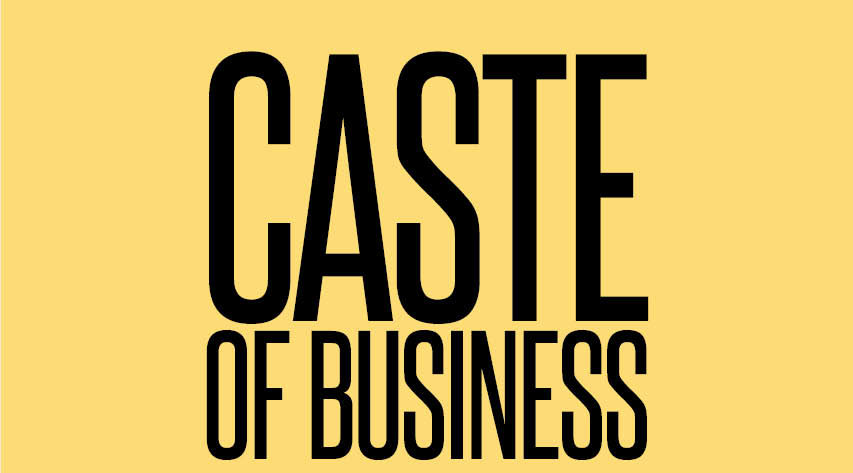
Data From 8 RTI Replies Show How Deep Rooted Caste Discrimination is at Public Sector Organisations
‘Where there is a will there is a way’, you might have heard this proverb many times in your life but in India especially this doesn’t hold true. Another version of this proverb is much more relevant in India – ‘Where there is a will, there is a caste blocking your way’. Yes, caste is everywhere, omnipresent. Yes, caste is omnipresent, not sure about the God.
In Dr Babasaheb Ambedkar’s words, ”Turn in any direction you like, caste is the monster that crosses your path.”
In India, every company has its own caste and businesses mainly dominated by Brahmins and Banias. Lower castes are ignored in the budget, ignored in almost all spheres of life in India. Reservation policies are for giving equal opportunities to the communities which have been discriminated and kept on the edge for centuries but reservation’s purpose is defeated when the polcies are not implemented properly. We have got hold of a few RTI replies from various public sector companies operating in India and not following constitutional guidelines about the reservation. These RTI replies are a slap in the face of those who oppose reservation without even knowing the reality of it and how so-called upper castes who are sitting at the top not implementing reservation policies properly.
These so-called upper castes also cry that it’s so and so many years since reservation and now it should end. In almost all these RTI replies from public sector companies show how so-called upper castes are occupying more than 50.5% of the positions, which is a clear violation of the constitutional guidelines on the reservation. SC and ST are mainly in the lower level positions. Check out the data from the RTI replies and see the reality of reservation in India and who is enjoying the reservation!
-
Power Finance Corporation
Out of total 497 employees, 288 are general i.e. almost 58%.

-
Ministry of Railways (including PSUs under it)
Out of total 1355377 employees, 728468 are from General, i.e. 53.7%. In Group A, out of 9351 employees, 6521 are from General i.e. whooping 69.7%! In Group B, 5214 employees are from General out of total 7507, which makes 69.5% of Group B employees. Clearly shows, how Ministry of Railways is not following the reservation guidelines.
In Group C (Safaiwalas) SC/ST/OBCs make up most of the employees.

-
Regional Institute of Education
There are total 167 employees, out of which 89 are General i.e. 53.3%. Again notice how SC/ST/OBCs are only at lower positions.

-
PSS Central Institute of Vocational Education
There are total 43 employees, out of which 30 are from General category i.e. 69.7%!

-
MSTC Limited
Total employees – 313, General – 172 i.e. 54.9%.

-
Hindustan Steel Works Construction Ltd. Kolkata
The total number of employees are 40 out of which 29 are General, 5 SC, 6 OBC and no ST, i.e. 72.5% of the employees are General.

-
NLC India Limited
Total employees 15085, out of which 7868 are from General category i.e. 52.2% employees at NLC India Limited are from General. If you notice different Groups, you can find how SC/ST/OBCs are mostly in the lower Groups/Levels. In Group A there are 3835 employees and out of these 2376 are from General, i.e. 62% of Group A employees are from General.

-
National Council of Educational Research and Training (NCERT)
The total number of employees are 111 and 67 of them are from General category, i.e. General occupy 60.3% of the positions at NCERT.

RTI data clearly shows how all these public sector companies are failing to implement reservation policies and how General category people are eating away reservation in the real sense. Who is at the implementing end of the policies and why so-called meritwala are failing to implement reservation policies? Is it kept this way so as to keep on eating all the benefits and at the same time defaming and opposing all those who demand equal opportunities? We demand there should be strict action against all those responsible and SC/ST/OBC positions be filled as per the rules of the reservation.
Read also –
Caste Discrimination in Jobs at Private Sector. What is the caste of your company?
Why India Cannot Have Lower Castes and Minorities Owned Businesses?
Research Shows Caste Discrimination in Indian Private Sector




Bharat ek democracy,but why caste discrimination.5thousand sal gulam rehe rehe agoya aj bhee gulam keun.branan ka bichar dhara itna nich gabar bhara hua he.dalit or minority ko sabse niche rakh diya.isilye Dr baba saheb diya hua samidhan n nehi mante he.manubadi sarkar dara delhi jantar mantar main Dr baba saheb dara bana hua samidhan ko jalla diya.police aj bhe giraftar nehi kiya.but aj dalit J.N.U student uppar main itna ghanit behave kiya saram ki bat he.arthik adharit main general ko 10% reservation diya goya but aj mulnivasi bahujan samaj 83 crore bakti ka daily income Rs o se 20 rupiya income.12.5 crore jabak jubati unemployed,16 crore lag jhapad main live in.crore,crore laga ka ghar nehi he.7.5 crore child labour.65% laga ka sudh pani nehi pe raha hain.3 crore lag.aj bhe bhik magte he.why called india independent aj only braman ,baniya or khatriya sadhin he.85 bahujan samaj gulam he.more dangerous to face bahujan samaj 1991 bharat sarkar suddenly declare to finance minister dara gate chukti sakhary kiya or liberasation,privation and glalisation lagu kiya.rastrayat udyag ko privation karke reservation khatam kiya he.
I would like to know more and more facts about the caste discrimination in both public sector and private sectors… divikumar
Jai BHEEM
We doesn’t understand the agenda of Brahmins, Everywhere they are in power. They never wants to any other in Power. We need to share this Caste Discrimination.
Good analysis
Want to use it for more awareness in my friend.
Agree with you